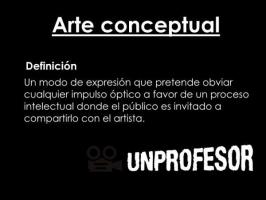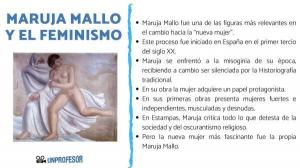Humanism and rebirth: what are they, characteristics and differences
Humanism it was a school of thought that originated in the Renaissance period and was characterized by a return or revision of the classical thought and letters of Greco-Roman culture.
Renaissance It is a historical stage after medieval times, and its main characteristics were a resurgence of the arts, sciences and critical thought.
In that sense, it can be said that the Renaissance was a specific period in history, and humanism was an intellectual current that was born in that period.
| Humanism | Renaissance | |
|---|---|---|
| Definition | School of thought that emerged during the Renaissance. | Historical period that spanned from the fourteenth century to the sixteenth century. |
| Characteristics |
|
|
| Main exponents |
|
|
What is humanism?
Humanism was an intellectual movement that emerged in the Renaissance between the fourteenth and sixteenth centuries, which claimed the rational thought proposed in the ancient Greek and Roman civilizations.
This new interpretation of reality was a way to shed medieval thought, also known as "the dark age", because it was a A time when any hint of scientific or rational thought was discarded, while the value of religion, sacred texts, and religion was exalted. theology.
Whereas in medieval times it was claimed that God was the epicenter from which everything had to be discussed, in the Renaissance humanism this vision changes and gives the human being a leading place as the new measure of all things.
Although the term humanism was created from the 19th century to conceptualize the aesthetic and intellectual changes that arose in the Renaissance, it was in this historical period in which the word "humanist" began to be used, to refer to those who dominated and taught letters and culture classical.
Some of the main representatives of the humanist school were Cosme de Medici, founder of the Florentine Platonic Academy, considered the cradle of humanism, Nicolas Machiavelli, the promoter of monarchical authoritarianism and Martin Luther, the German theologian responsible for the Protestant reform that generated a definitive division in the Church catholic.
Characteristics of humanism
Humanism, as a school of thought, has the following characteristics:
Anthropocentric conception
In humanism, it is man who becomes the center from which all systems of thought, beliefs and aesthetics start. The individuality of the human being and the use of reason to interpret reality are valued.
Back to the classics
Humanism promotes a rescue and review of the literature, philosophy and knowledge inherited from the Greeks and Romans, who are considered canons of rational thought, science, and Arts.
Neoplatonism, Stoic philosophy, Greek and Roman myths played a fundamental role in humanist thought.
Rejection of religious dogmas
Contrary to what happened in the medieval period, in the Renaissance the use of reason was promoted over religion. Religious tolerance was also instituted as a means to guarantee social coexistence.
In this sense, it is worth highlighting the contribution of the Dutch theologian Erasmus of Rotterdam, who despite remaining attached to the Catholic dogma, always maintained a criterion independent that was expressed in his works, especially in Praise of madness, in which he openly criticizes the moral corruption in which the Church was found catholic.
Vulgarization of knowledge
The humanists promoted the dissemination and expression of all knowledge in plain language, in such a way that anyone had access to knowledge.
What is the Renaissance?
The Renaissance was a historical period that spans the 15th and 16th centuries, in which great aesthetic, intellectual, and scientific and cultural events that marked the end of the obscurantism that prevailed during the Middle Ages, and in turn were a transition into the Middle Ages. Modern
During the Renaissance, the emergence of a school of thought called humanism took place, which had a great influence in all areas of knowledge. In this way, the return to the great Greek and Roman works and thinkers was reflected in painting, letters, science, politics, etc.
The term Renaissance was coined by the Italian artist Giorgio Vasari to refer to the rescue of knowledge by the Italians of Florence, considered the cradle of this stage historical.
Renaissance Features
During the Renaissance a series of changes occurred on multiple levels that would later become distinctive features of this era, such as:
Religion is no longer the epicenter of power
The division of the church between Catholics and Anglicans, added to the ideas spread by the humanist school, resulted in a weakening of religious power.
This gave way to an anthropocentric conception that, while respecting the existence of religion, put the human being as a new measure of all things.
Expansion of the bourgeoisie
The boom in commercial exchanges in Europe began a growth of the bourgeois class, which became a factor of power, as opposed to the system established in the Middle Ages by feudalism, which was characterized by the relationship between the owner of the fiefdom or extension of land and the serfs or peasants who worked for him.
Rise of the arts
During the Renaissance, the arts found aesthetic inspiration in humanistic ideas, which was reflected in sculpture and painting, whose main motif was the classical Greek myths and Romans.
In this sense, artists such as Giotto di Bondone, Leonardo Da Vinci, Rafael Sanzio, Tiziano Vecellio did the same with painting, while Miguel Ángel Buonarroti and Donato di Niccoló were two of the highest representatives of the sculpture.
Architecture was not far behind, and although it rescued Greek classicism, it also made new contributions, such as the balustraded column and the construction of spaces tailored to man, instead of constructions monumental.
Scientific advances
The renewed interest in the human being brought with it the study of the physical structure of him for a better understanding of the functioning of him. In 1543, De humanis corporis fabrica was published, an illustrated compendium on human anatomy by the Flemish physician Andrés Vesalio, considered one of the most complete works of its kind.
There were also advances in astronomy, promoted by Nicolaus Copernicus and his theory of the movement of the planets around the sun and in the exact sciences thanks to Francis Bacon and his theory of empiricism, or scientific evidence as a tool of knowledge.
See also Modernity and postmodernity: characteristics and differences.



